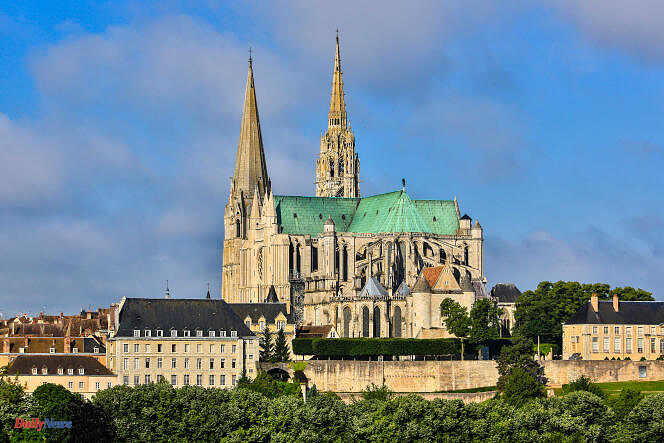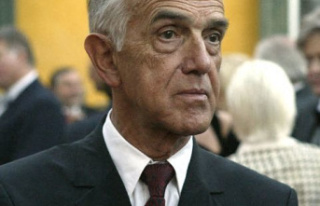Nearly ninety thousand, maybe a hundred thousand. The number of religious buildings in France differs depending on the source, but it provides a significant part of tourist activity, particularly thanks to abbeys and cathedrals, which are the most visited. So the journalist Sophie Jovillard has chosen to show us around ten of the most remarkable ones: the oldest, the richest, the tallest…
A most classic approach, whose architectural treasures – and an encounter – quickly make us forget the lack of originality of the staging. Starting with the imposing monastery of Lérins Abbey, on Saint-Honorat Island off the coast of Cannes (Alpes-Maritimes), whose unique fortified tower conceals a two-story cloister and twelve white marble columns.
The Saint-Jean baptistery of Limonum (future city of Poitiers) is, for its part, the oldest surviving cult building in the West (5th century), and the rare witness to the architectural practices of Antiquity, with an imposing baptismal pool.
Religious opulence
Sophie Jovillard launches the subjects of Val-de-Grâce, in Paris, an ancient abbey which owes its preservation, during the French Revolution, only to its transformation into a military training hospital.
Direction, then, the abbey of Fleury (Loiret) and its relics of Saint Benedict, author of the rules of life for monks still applied today. With its vast square porch and Ravenna marble, it marks the beginning of religious opulence. This will reach its peak at Cluny, in Burgundy, a monastic empire in the 11th century which dominated Europe.
Too vast, too rich, too powerful for the taste of the bishops, who, in reaction, will have cathedrals erected. Inspired by Cluny, the first of them was built in Autun (Saône-et-Loire). His visit allows, among other things, to discover his goldsmith treasures. The current bishop, Benoît Rivière, continues to enrich this treasure by calling on Goudji, a world-renowned octogenarian goldsmith sculptor. The visit to his workshop in Montmartre, surrounded by his four hundred hammers and his creations, offers a beautiful moment of sincerity.
Mythical stained glass windows
Later will follow a report in Chartres, the first Gothic cathedral, visited here through the prism of its mythical stained glass windows, currently under restoration. Then at Notre-Dame de Paris, partially destroyed on April 15, 2019. Unable to include, in the documentary, the installation of the new spire, Friday, December 8, the cameras set off to climb the spire of the cathedral of Strasbourg, long the highest in Europe.
In the meantime, the viewer will have been able to appreciate the timelessness of the Saint-Martin-du-Canigou abbey (Pyrénées-Orientales), at an altitude of 1,055 meters, where a mixed community of the Beatitudes simply lives. A blueprint that we rediscover in the Notre-Dame de Sénanque abbey (Vaucluse), nestled at the bottom of a lavender field in Provence, and in that of Fontenay (Côte-d'Or), the oldest preserved Cistercian abbey and listed as a World Heritage Site.
Female viewers, for their part, will particularly appreciate the Fontevraud Abbey, in Anjou. Cradle of the Plantagenet dynasty, which became the antechamber of royal power, it owes its notoriety to the presence of the recumbent figures of Richard the Lionheart and Eleanor of Aquitaine. Look closely: the queen is sculpted with a book in her hand, which is the first representation of a woman reading.












